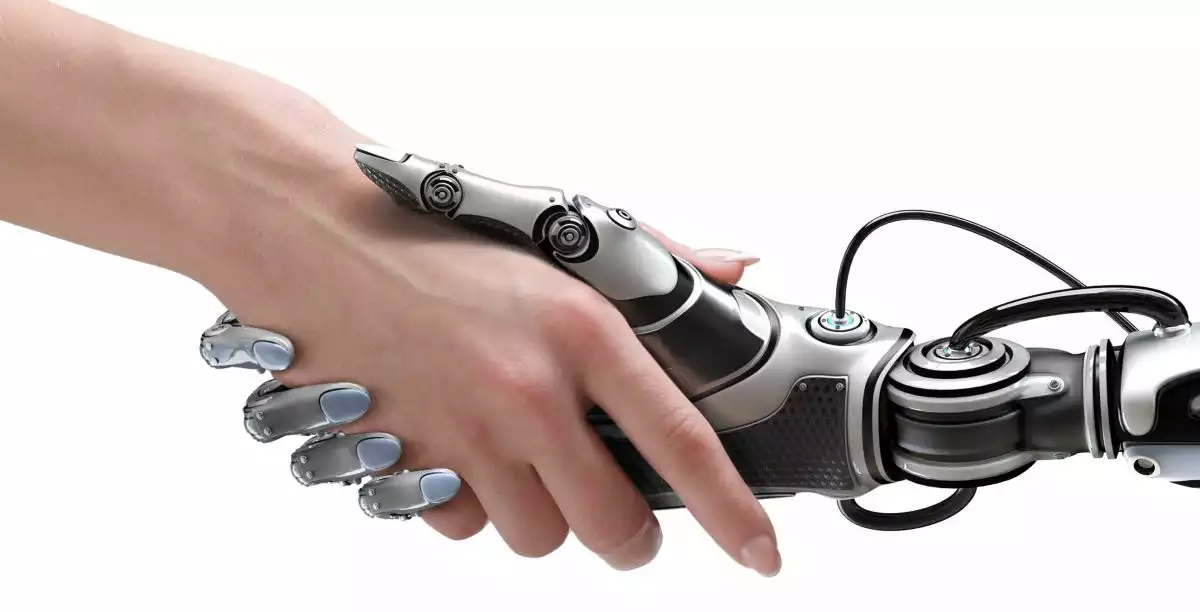

It’s obvious that Artificial Intelligence is becoming more and more convenient for every business, sometimes so convenient that people start questioning how long until AI will eventually replace them in the workforce.
However, those fears are for the ones who don’t really understand the core value of AI and its applications. Artificial intelligence is radically altering how work gets done and who does it, with the ultimate purpose of collaborating with humans to augment their capabilities, not replace them.
The right question to ponder here should be: How can AI and humans collaborate?
Misconceptions
Many tend to think AI as an alternative to humans in the workplace and even fear that AI-powered machines will eventually make human beings completely unnecessary, turning hundreds of thousands, even millions, of people jobless. But this is far from reality.
Yes, AI will soon replace jobs involving repetitive or basic problem-solving tasks, as it can go beyond current human capacity. However, a new era of possibilities for new job opportunities will also be created, especially roles that require the skillset to implement new systems as this is quickly becoming a new challenge for many businesses when applying AI in their organisation.
According to a study carried out by ServiceNow, 94% of executives agreed that the demand for jobs that require soft skills including communication, collaboration and creative problem-solving will increase when repetitive tasks are handled by automation. In addition, a MIT Sloan Management Review blog article labelled those new jobs as trainers, explainers, and sustainers, humans in these roles will complement the tasks performed by cognitive technology, ensuring that the work of machines is both effective and responsible.
In fact, most business processes, including ones that have been automated by AI, are human-involved one way or another. It is believed that companies achieve the most significant performance improvements when humans and machines work together, as they compliment each other extremely well resulting in productivity if done correctly. That will lead us to the term “collaborative intelligence”, where humans and AI integrate.
Benefits of collaborative intelligence
Collaboration is one of the basic principles for the sustainability and positive evolution of any organisation. Collaborative intelligence is a system where humans and AI work together to actively enhance each other’s complementary strengths:
The tangible benefits of collaborative intelligence can be broken down into 5 categories: transparency, resources, productivity, accuracy and possibility.
Transparency, with the help of collaborative intelligence, has improved greatly thanks to humans’ involvement with AI models and systems. Each step that incorporates human interaction demands the system be designed to be understood by humans to take the next action, and that there be some human agency in determining the critical steps. Now, humans and AI can undertake the task alongside one another, which makes miscommunication harder to happen.
Data resources are reduced dramatically due to human integration as AI isn’t in charge of the whole process anymore. Now with human involvement in complex tasks such as risk validation or decision-making, AI just needs a minimum amount of data to work on, learn from and eventually improve upon itself.
Productivity can be even higher than a fully automated solution as AI models can handle not only repetitive, manual tasks but also anomalous tasks after they have been taught, trained and fed with anomalous case’s data by human touch.
Regarding accuracy, humans now can double check for errors or cases in which AI models don’t have high enough confidence, resulting in a higher accuracy rate.
How AI and humans can collaborate
Human-in-the-loop (HITL) is a process that leverages both human and machine intelligence to create machine learning models. Harvard Business Review says humans need to do three important things for machines: “They must train machines to perform certain tasks; explain the outcomes of those tasks, especially when the results are counterintuitive or controversial; and sustain the responsible use of machines.”
With human-in-the-loop, no single task will be entirely completed by a machine or a human working on their own; instead, every task will have a human and machine working together with shared responsibilities. Below are some suggestions on how AI and humans can collaborate:
Want to learn more about a framework in which AI and Humans can collaborate? Get in touch for a free consultation and discover how your business process can be transformed with our latest cutting-edge offering AI Factory.
Level 39, One Canada Square,
Canary Wharf, London
E14 5AB
6 Battery Rd, #03-62,
The Work Project @ Six Battery Road
Singapore 049909
Studio 1006, Dreamplex Thai Ha, 10th floor 174 Thai Ha Str, Dong Da Ward
Hanoi 100000, Vietnam
Otemachi Building 4th Floor
Otemachi 1-6-1, Chiyoda
Tokyo 100-0004, Japan
